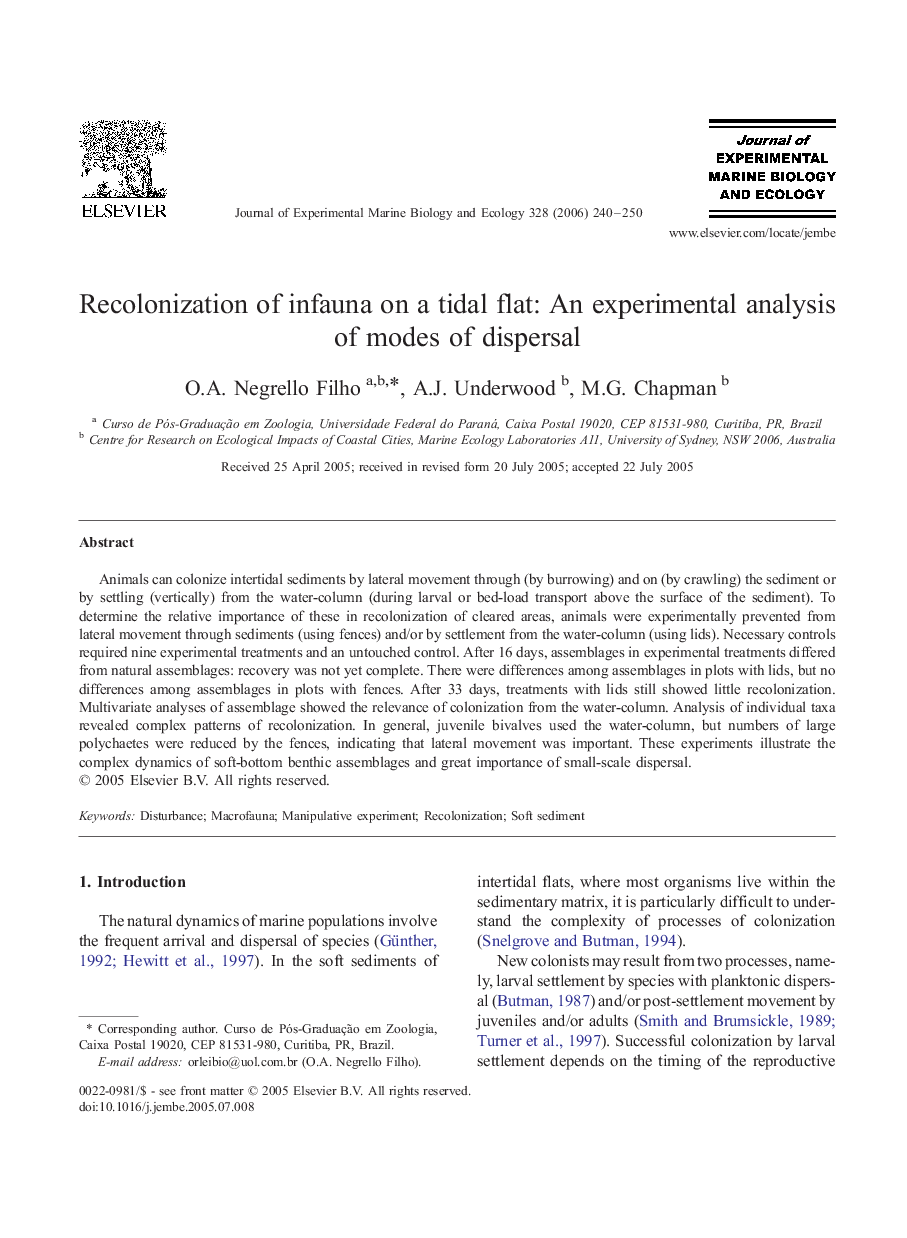| Article ID | Journal | Published Year | Pages | File Type |
|---|---|---|---|---|
| 4398280 | Journal of Experimental Marine Biology and Ecology | 2006 | 11 Pages |
Animals can colonize intertidal sediments by lateral movement through (by burrowing) and on (by crawling) the sediment or by settling (vertically) from the water-column (during larval or bed-load transport above the surface of the sediment). To determine the relative importance of these in recolonization of cleared areas, animals were experimentally prevented from lateral movement through sediments (using fences) and/or by settlement from the water-column (using lids). Necessary controls required nine experimental treatments and an untouched control. After 16 days, assemblages in experimental treatments differed from natural assemblages: recovery was not yet complete. There were differences among assemblages in plots with lids, but no differences among assemblages in plots with fences. After 33 days, treatments with lids still showed little recolonization. Multivariate analyses of assemblage showed the relevance of colonization from the water-column. Analysis of individual taxa revealed complex patterns of recolonization. In general, juvenile bivalves used the water-column, but numbers of large polychaetes were reduced by the fences, indicating that lateral movement was important. These experiments illustrate the complex dynamics of soft-bottom benthic assemblages and great importance of small-scale dispersal.
